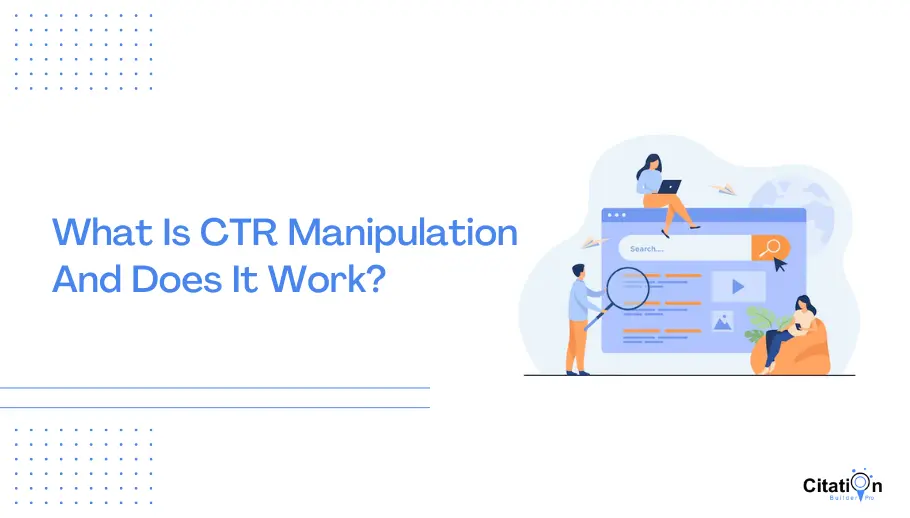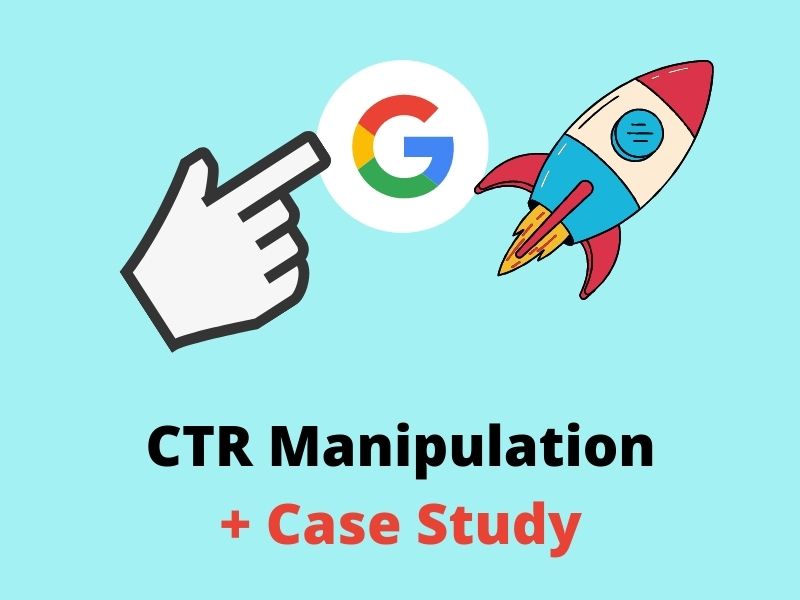Enhance Your Google My Service Listing with GMB CTR Manipulation
Wiki Article
Optimizing Organic Click-Through Rates With CTR Control
The optimization of organic click-through rates (CTR) is a nuanced undertaking that pivots on comprehending both user psychology and reliable web content discussion. The landscape is rife with misconceptions and oversimplifications concerning what absolutely drives CTR.Comprehending Click-Through Rates
Comprehending click-through prices (CTR) is crucial for evaluating the effectiveness of on-line marketing approaches. CTR measures the percent of users that click a details link or ad contrasted to the total variety of individuals who watch it. A higher CTR shows that the content is engaging and appropriate to the target market, while a lower CTR might signify a requirement for optimization.To calculate CTR, divide the number of clicks by the number of impacts and increase by 100. As an example, if an advertisement obtains 300 clicks out of 10,000 impressions, the CTR would be 3%. This metric is crucial for assessing various elements of electronic marketing, consisting of search engine optimization (SEO), email campaigns, and social media marketing.
Furthermore, assessing CTR helps marketers recognize which methods generate the very best results and which require improvement. By concentrating on boosting CTR, companies can enhance their content's exposure and efficiency, leading to raised traffic and possible conversions. Recognizing the subtleties of CTR is fundamental for any marketer aiming to maximize their on-line existence and take full advantage of return on financial investment (ROI)

The Psychology of User Habits
Customer habits is substantially influenced by mental factors that dictate how individuals engage with on the internet content. Comprehending these elements is crucial for maximizing click-through rates (CTR) in organic search engine result. Cognitive biases, such as the anchoring result, play a crucial duty in forming individuals' perceptions. When customers experience details, their initial perceptions can greatly affect their succeeding judgments regarding relevance and reliability.Psychological feedbacks also significantly impact customer behavior. Material that reverberates psychologically can set off a sense of necessity or inquisitiveness, prompting customers to click. Furthermore, social proof-- such as individual evaluations or scores-- can improve count on and encourage interaction, as individuals often look to the actions of others to notify their own decisions.
In addition, the concept of shortage can drive clicks - CTR Manipulation Press Release. Limited-time deals or unique content produce a concern of losing out (FOMO), compelling customers to act swiftly. Comprehending these psychological vehicle drivers makes it possible for marketers to develop more engaging content that reverberates with their target audience
Reliable CTR Control Methods
Leveraging psychological insights can substantially boost click-through rates (CTR) with targeted manipulation techniques. One of one of the most efficient techniques is the use of compelling headlines that evoke inquisitiveness or necessity. Phrasing titles as concerns or incorporating numbers can bring in more attention, triggering individuals to click.An additional strategy entails enhancing meta summaries to develop a sense of significance and immediacy. By click this link plainly detailing the remedies or benefits given in the content, you can engage potential viewers and encourage them to click. Additionally, making use of power words-- such as "unique," "confirmed," or "totally free"-- can enhance the allure of your material.
Aesthetic elements likewise play an important function. Integrating distinctive photos or thumbnails can draw individuals in and enhance CTR. A/B screening various visuals can aid recognize which images resonate finest with your audience.
Lastly, guaranteeing that your material promises deliverable value results in higher CTR. They are more likely to engage when customers perceive that clicking will certainly offer them with purposeful insights or solutions. By utilizing these methods attentively, marketing experts can properly manipulate CTR to their advantage while preserving moral requirements.
Usual Misconceptions About CTR
Several mistaken beliefs surround click-through rates (CTR) that can lead online marketers to make illinformed choices. While a high CTR suggests that more individuals are clicking, it does not guarantee sales or conversions.Another usual belief is that CTR is a separated metric. important link In truth, CTR ought to be reviewed in conjunction with various other efficiency indicators, such as bounce rate and conversion price, to gain an alternative sight of campaign success.
Additionally, some marketing professionals presume that optimizing for CTR alone is enough. Concentrating exclusively on CTR can lead to clickbait tactics that might attract clicks however fall short to engage users meaningfully. GMB CTR Manipulation. This strategy can hurt brand track record and cause reduced retention rates
Last but not least, there is a notion that CTR approaches are universally effective. The truth is that ideal CTR methods can differ significantly throughout industries and target market, requiring customized methods for various market segments. Understanding these misconceptions is important for creating reliable CTR strategies that line up with overarching advertising goals.
Determining CTR Success
Although high click-through prices (CTR) can indicate effective interaction with content, gauging their true success needs a comprehensive analysis of numerous elements. It is have a peek here vital to comprehend the context in which the CTR is attained. A high CTR on a deceptive title might not translate to meaningful engagement or conversions, inevitably showing improperly on the brand's integrity.2nd, reviewing the resource of traffic is essential. Organic web traffic from online search engine can indicate a durable material technique, while clicks from pointless sources might indicate an absence of targeting. In addition, gauging the succeeding user behavior is essential; assessing metrics such as bounce rate, time invested in page, and conversion prices can supply much deeper understandings into the top quality of the engagement launched by the CTR.

Verdict

The optimization of organic click-through prices (CTR) is a nuanced endeavor that pivots on understanding both customer psychology and effective content presentation. CTR gauges the percent of users who click on a details web link or promotion contrasted to the complete number of individuals that view it. A greater CTR shows that the material is engaging and pertinent to the target audience, while a lower CTR might indicate a demand for optimization.
Concentrating solely on CTR can lead to clickbait techniques that may bring in clicks but fall short to engage users meaningfully. Additionally, gauging the succeeding individual behavior is crucial; evaluating metrics such as bounce rate, time spent on web page, and conversion rates can provide deeper insights into the high quality of the engagement started by the CTR.
Report this wiki page